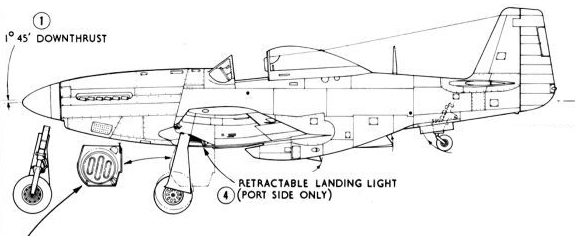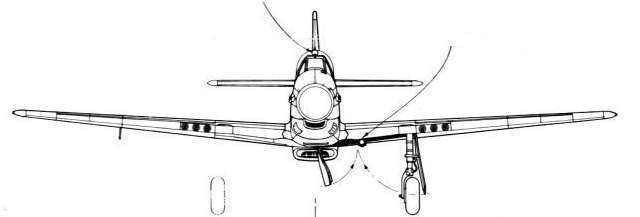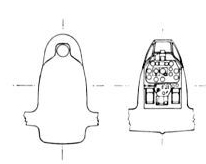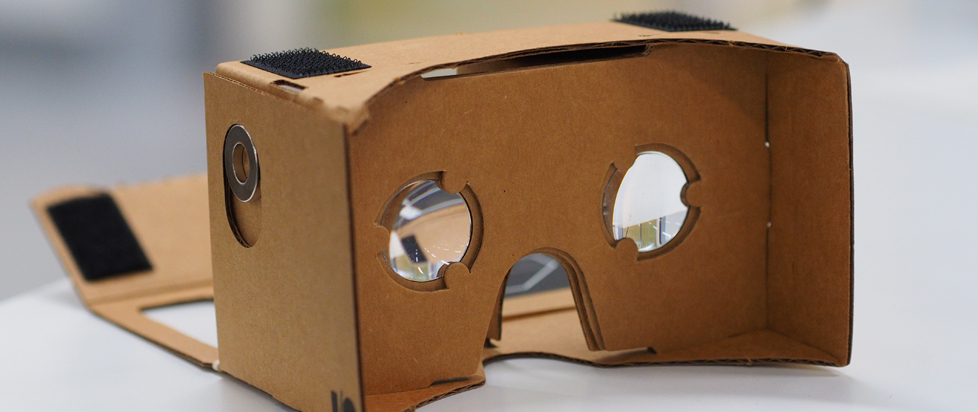
Anatomy of an Airplane

This column is a reprint from Unwinnable Monthly #157. If you like what you see, grab the magazine for less than ten dollars, or subscribe and get all future magazines for half price.
———
Architecture and games.
———
I’ve always been fascinated by flight simulators. The first game that I can actually remember playing was a combat flight simulator by Lucasfilm called Secret Weapons of the Luftwaffe. The game was released way back in 1991 on floppy disk. This one came in a nice cardboard box with a paper manual describing the Air War in Europe that ran for no less than 225 pages. I still have a copy.
The latest and greatest flight simulator is undoubtedly the eponymous game by Microsoft. I’m of course talking about Microsoft Flight Simulator. The company has been making entries in this particular series for several decades now, the first game in the franchise having been released in 1982. I got started with Microsoft Flight Simulator 98, but really got into things a couple of years later when Microsoft Flight Simulator 2002 came out. I’ve put several hundred hours at least into every subsequent release, a real standout being Microsoft Flight Simulator X. This one hit store shelves back in 2006, but remained the latest entry in the series until 2020, something that helps to explain how I managed to sink more than 1,000 hours into the game.
What I love so much about Microsoft Flight Simulator is that I can hop into all sorts of different airplanes, particularly warbirds. I happen to be a pilot, so there’s nothing actually preventing me from flying any of them, but warbirds these days are so incredibly rare that hardly anybody ever gets the chance. I like to go through all of the technical manuals before taking flight in the game, something which teaches me a ton about the different airplanes. These contain all sorts of information about the various components and systems in much the same way that you can learn everything you need to know about a building from its architectural documentation. Since the anatomy of an airplane is probably one of those things that you never thought much about, I figured this might be the moment to take an architectural approach to what I would argue is the best warbird of them all, the P51 Mustang.
The plane was a product of the legendary designer James Kindelberger. Created by a company called North American Aviation for the Royal Air Force back in 1940, the P51 Mustang entered service a couple of years later in 1942, mostly being used for reconnaissance missions. The earlier models were largely restricted to this role because they came equipped with a notoriously outdated engine called the Allison V1710, but later models were either given the famous Rolls Royce Merlin 66 or a license built version of this particular motor known as the Packard V1650. This power plant enabled the P51 Mustang to reach altitudes of up to 40,000 feet without sacrificing its already impressive range of 750 nautical miles, a staggering 1,375 nautical miles with drop tanks. The airplane cruised at 390 knots and featured a top speed that scratched the sound barrier at just over 500 knots. These made the P51 Mustang a perfect escort fighter for the bombers flying raids, but the airplane was also frequently used by the Army Air Forces to attack various types of ground installation, something which allowed the Allies to gain air superiority over the Axis by 1944, at least in Europe. The plane served in every theater of operations during World War 2, shooting down more than 4,950 enemy aircraft. North American Aviation would make over 15,000 copies of the P51 Mustang before the Air Force began transitioning to another notable warbird in 1949, the F86 Sabre. That famous jet fighter was interestingly made by the same company, North American Aviation.

When it comes to the basic details, the P51 Mustang is a single seat, low wing monoplane with a semi-monocoque structure, meaning that most of the loads are supported by the actual shell of the airplane. The materials used are mostly steel and aluminum. The wings are much thinner than conventional airfoils in order to reduce drag at high airspeeds, a design called laminar flow. These extend upwards in a type of cantilever known as dihedral, something that provides better longitudinal stability, notably near a stall. The wings feature differential ailerons on the outboard side and plain flaps on the inboard side of their trailing edges, basically ailerons that move in reverse of each other to counteract a phenomenon called adverse yaw in addition to hydraulically actuated flaps that extend without creating any kind of a gap. The empennage is typical of most aircraft, featuring a moveable rudder and elevator attached to fixed vertical and horizontal stabilizers.
While most planes now have a nosewheel, the P51 Mustang is of the combination steerable and free castering tailwheel type with fully retractable landing gear, controlled hydraulically from the cockpit by means of a lever on the left console. This can be lowered in the event of an emergency with a nearby handle that releases the pressure in the hydraulic lines, allowing the landing gear to fall of their own weight. The plane also features a warning in the form of red and green lights along with a horn that sounds whenever you throttle to idle without extending the landing gear. The brakes are of the hydraulically actuated disk type and are given pressure from a reservoir driven by a pump on the accessory drive, located behind the engine. The control surfaces are actuated by the stick and a pair of pedals through a series of pulleys and pushrods, the pedals for the rudder and brakes, the stick for the ailerons and elevator. These each have a trim tab on their trailing edges which are controlled by a series of knobs inside the cockpit on the left console.
As for the power plant, the P51 Mustang comes equipped with a liquid cooled, carbureted V12 engine featuring a multiple stage supercharger controlled by aneroid switch that cuts in automatically at altitude, the first stage or low blower at 14,500 feet and the second stage or high blower at 19,500 feet. This basically is just a compressor driven by an accessory belt at the back of the engine which increases the pressure of the air entering the manifold for increased performance, particularly at high altitude where the air is thin. The motor is capable of developing well over 1,400 brake horse power at full throttle. While most engines at this point feature fuel injection, the power plant of the P51 Mustang has a float type carburetor with a manifold pressure regulator that automatically compensates for differences in air density by means of a butterfly valve. The airplane is outfitted with a scoop under the fuselage that collects ram air which is bypassed in the event of a blockage by a door that allows heated air from the engine compartment to enter the carburetor. The after cooler and coolant radiators are also found in this particular part of the aircraft. Since the engine is rather substantial, the P51 Mustang is cooled by glycol through two separate systems, the first cooling the actual motor, the second cooling the supercharger.
The plane has a mechanism that automatically changes the amount of fuel passing into the manifold, rich mixture at low altitude and lean mixture at high altitude. The fuel itself comes from a combination of two main tanks in the wings, one center tank in the fuselage and two external drop tanks for up to 489 gallons of gasoline. This gets forced into the carburetor by means of a primary pump on the accessory drive along with a pair of electrically powered secondary pumps within each tank and a special priming pump, all of which apart from the primary pump which is engine driven are actuated by switches in the cockpit. The tank in use at any given time is controlled by a selector switch on the floor in front of the stick. Some of the vaporized fuel goes back to the tanks when the engine is running by means of a return vent line. As for the oil system, the P51 Mustang has a large tank just forward of the firewall in addition to a radiator inside the scoop under the fuselage. The airplane features an outlet door on the bottom of the scoop which automatically controls the temperature and a scavenger pump which gathers up all of the oil thrown off by the pistons and drive shaft. This pump is in fact gravity fed, so the P51 Mustang is only able to stay inverted for eight or nine seconds before the engine will start to sputter.

Some aircraft with reciprocating engines are direct drive which means that engine and propeller turn at the same rate, but the P51 Mustang features a constant speed propeller which automatically changes the pitch of its four blades by means of a governor that operates on a combination of hydraulic pressure from the oil reservoir and fly weights. The number of revolutions per minute can be set by a lever in the cockpit next to the throttle.
The electrical system runs on direct current supplied to the battery through a voltage regulator by means of an engine driven generator, both controlled by switches. The electricity produced powers the coolant and oil radiator controls, interior and exterior lighting, starter and secondary fuel pumps along with all of the radios and other avionics, all protected by circuit breakers in the cockpit. The amount of current flowing through the system is displayed by an ammeter that reads negative when power is being supplied by the battery and positive when power is being supplied by the generator. The ignition system is completely independent, current for the spark plugs in the engine being produced by a pair of magnetos controlled by a selector switch. These are basically just magnets rotating around a copper coil.

Fighters are known for their cramped cockpits and the P51 Mustang is no exception, but the controls are at least laid out for maximum efficiency. Similar to most light aircraft, cold air is fed into the cockpit through a small scoop on the fuselage, warm air being fed into the cockpit from another small scoop just behind the radiators. The controls for regulating the air intake are located on the floor next to the fuel gages. Featuring a fairly standard safety belt and shoulder harness, the seat which is made from a type of material known as kapok is actually used in the event of an emergency as a life preserver. When it comes to the instruments, these are concentrated on the front console, flight instruments being grouped on the left, engine instruments being grouped on the right. The vacuum driven instruments which consist of the turn coordinator as well as the attitude and heading indicators are operated by a vacuum pump driven off the engine, the suction gage on the lower part of the front console showing whether or not the vacuum pump is providing enough pressure to spin the associate gyroscopes.
The most important instruments in the airplane are the airspeed indicator, altimeter and vertical speed indicator. These are powered by some combination of ram air entering a long shaft extending forward of the right wing known as a pitot tube and static air from a series of plates on the fuselage. While the airspeed indicator measures the difference between dynamic and static pressure, the altimeter and vertical speed indicator only rely on static pressure. The principle is that pressure decreases with altitude, so the needles on the altimeter and vertical speed indicator show an increase or decrease during a climb or descent even if the pitot tube is blocked. The airspeed indicator on the other hand will show an increase or decrease only when the amount of ram air entering the pitot tube changes, at least if static pressure is constant. The pitot tube is heated to prevent the formation of ice.

The engine instruments include a manifold pressure gage along with a tachometer, carburetor temperature gage, coolant temperature gage and engine gage. This actually is a combination of three different instruments, showing fuel pressure in addition to oil pressure and temperature. The various other instruments on the front console include a compass, hydraulic pressure age, oxygen pressure gage, ammeter and of course the clock. Located behind the seat are a transceiver which operates in the range known as Very High Frequency and an automatic direction finder which operates in the range called Low Frequency. The former features a mast behind the canopy and the latter features a mast running between the vertical stabilizer and the cockpit. The actual instruments are both controlled by knobs inside the cockpit on the right console. In case you’re wondering, the automatic direction finder is a navigation instrument with a gage on the front panel that looks a little bit like a heading indicator, but features a large needle in the middle that shows your bearing to a given station.
Since the airplane can be flown up to considerable heights, North American Aviation equipped the P51 Mustang with an oxygen system. This works entirely on demand, meaning that a regulator automatically furnishes the right amount of oxygen. You simply plug your mask into the relevant receptacle and open up the adjacent valve. The gages between the front and right consoles include pressure and flow indicators. When it comes to the oxygen tanks, these are located just behind the cockpit. They’re accessible through a small door in the left side of the fuselage.
I’ve purposefully excluded the various parts of the airplane which are used for combat, but the P51 Mustang has a couple of additional features that are probably worth mentioning, the lights first and foremost. These are color coded to indicate direction, so the P51 Mustang has red, green and white lights on the left wing, right wing and tail. The plane also features a landing light on the left main gear strut. These can all of course be controlled by means of switches on the right console. The airplane has a parking brake in addition to a mooring bag filled with stakes and rope which is located within a small baggage compartment in the fuselage. The cockpit features a leather case for maps and charts to the left of the seat. This can be found immediately above the bracket on the floor for something called a pilot relief tube.
I’ve mentioned this a few times before, but I think that architecture as both term and concept should be considered in a very broad sense. I mean, anything which is built or constructed requires a certain amount of planning, something which is typically called design. You might not think of an object as having been designed, but somebody still had to engage in a process of production. Perhaps they called themselves a technician. Maybe they were called an engineer. In my opinion, anything designed means architecture, at least in a certain sense of the word. Architects are definitely known for buildings, but the same approach to construction is common to all sorts of different trades and professions, the products of which being ships, cars or all manner of other things including of course aircraft. I personally believe that understanding how all of these things function from an architectural perspective can be a little bit enlightening.
———
Justin Reeve is an archaeologist specializing in architecture, urbanism and spatial theory, but he can frequently be found writing about videogames, too. You can follow him on Twitter @JustinAndyReeve.




